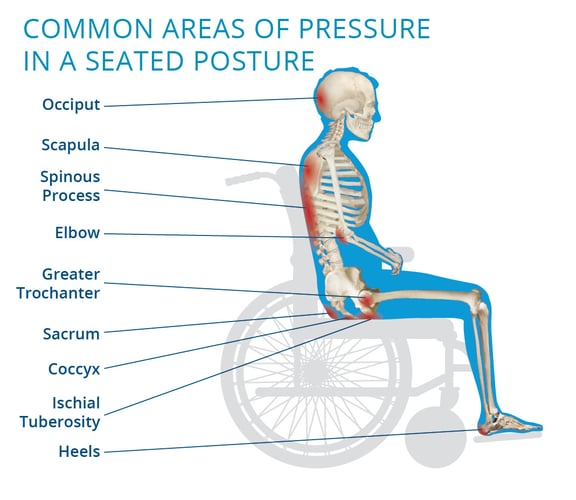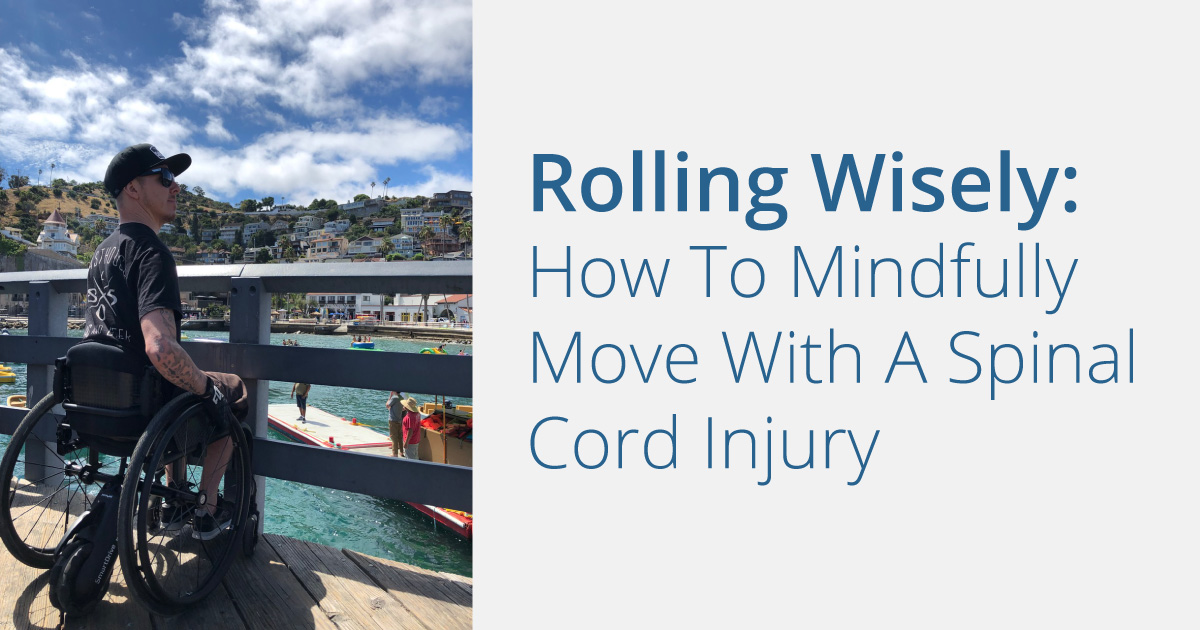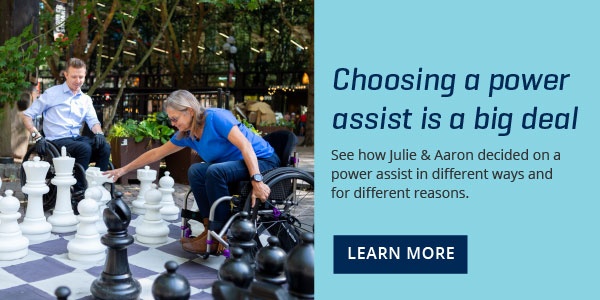When describing how I manage and live with a spinal cord injury, I often use the term "mindful movement." I have come to understand that I must be aware and precise with how I move and treat my body to prevent further injury that would most certainly compound the difficulty I already live with. These are strategies that work for me and are not meant to take the place of guidance provided by a medical health professional.
Here are a few things to keep in mind while living an active, healthy lifestyle.
Use Leverage: Transfer Techniques
I must consider how to use leverage (the exertion of force by means of a lever or an object used in the manner of a lever) to make functional activities happen safely and without injuring myself. I think about where I place my hands and feet when standing or transferring to and from a car, bed, or wheelchair. I do this to prevent excessive force on the joints and long bones of my body.
All too often I hear of friends with spinal cord injuries suffering limb fractures caused by improper body mechanics when transferring. To which, I look at the equipment near me for assistance and protection. On my TiLite wheelchair, I rely on my footplate to keep my feet flexed and together when transferring in and out of the wheelchair. Keeping the brakes on during these transfers ensures that the wheelchair does not roll away from me causing me to lose balance or fall.
Check Your Skin: Skin Breakdown Prevention
As we all know from our early days in the hospital, living with a spinal cord injury means our skin comes first! It must be maintained with hyper vigilance to avoid breakdown, infection, or further injury.
Due to my high level injury, a fractured vertebrae C4-6 resulting in incomplete quadriplegia, I have reduced sensation which makes me susceptible to unintentional self-inflicted injury. Once, I placed a heating pad on my leg, fell asleep and awoke to a large, sizzling burn. Had I paid closer attention to the temperature and duration of the heating pad, I could have prevented a lot of pain and suffering.
Additionally, pressure injuries can develop on most all boney landmarks of the body if left unchecked and unrelieved. I suggest staying mindfully aware of pressure, and duration of pressure on the Coccyx (tailbone), Ischial Tuberosities, hips, heals, ankles, elbows, shoulder blades and back of the head. Perform a pressure relief and/or have someone adjust your position every 15-30 minutes for 1-3 minutes at a time to avoid a devastating pressure sore.

There are three places on my wheelchair I am most concerned with: the seat cushion, height and padding on the back rest, and the frame on the bottom which holds me legs in. I have two cushions which I rotate often to give my body a change. I have extra padding on my lowered back rest so that when I do adjust I have the cushion to push against and not bruise my arms. As for the lower part of the frame of my chair, I make sure that it is narrow in the width, but not too close that my leg would fall to rest on it and cause a pressure point.
Control The Controllables: Temperature
The importance of keeping yourself cool in the summer heat and warm when the temperatures dip is imperative in avoiding autonomic dysreflexia.
I struggle tremendously with temperature control which, if not closely regulated, can cause me great pain and dangerous suffering. Ask your doctor about this risks and complications of AD.
Food Is Fuel: Spinal Cord Injury Diet
Diet! Diet! Diet! I have said it many times before, but high quality, unprocessed, organic foods and drinks greatly improve my body's vitality, immunity and healing capabilities. Living with a spinal cord injury means weight management takes the front seat as it plays key roles in independence, body mechanics and overall health. Since living a sedentary lifestyle, our bodies do not process food as it once did, and we must be aware of everything that we take in. I know of many friends who have gained too much weight which changes even the wheelchair they use.
Choose The Best!: Mobility Equipment
My racing background trained me to be very aware of the machines I use to enhance my performance. I pay close attention to and maintain perfect working condition of my wheelchair, walker, canes and any other mobility devices I use to get around. After all, I did suffer a spinal cord injury due to a mechanical failure of my motorcycle. Lesson learned!
Not sure where to start with wheelchair maintenance? The University of Pittsburgh developed a wheelchair maintenance program that can be downloaded by clicking here.
I ensure the proper fit and use of adaptive devices such as kitchen tools like forks, knives, heat protection and assisted grabbers. Misuse of these items can also result in preventable injury.
The right medical supplies are also important in preventing self injury. Select products that fit your anatomy and compliment your chemistry. Allergic reactions can even occur due to allergies to plastics, rubbers or chemicals.
Know your body, and know your equipment. I think ahead, plan accordingly and mindfully move through life.
![]() Aaron Baker
Aaron Baker
Aaron Baker is a recovering quadriplegic athlete, author, ambassador and friend. Prior to his career-ending spinal cord injury, Aaron was a professional motocross racer.

